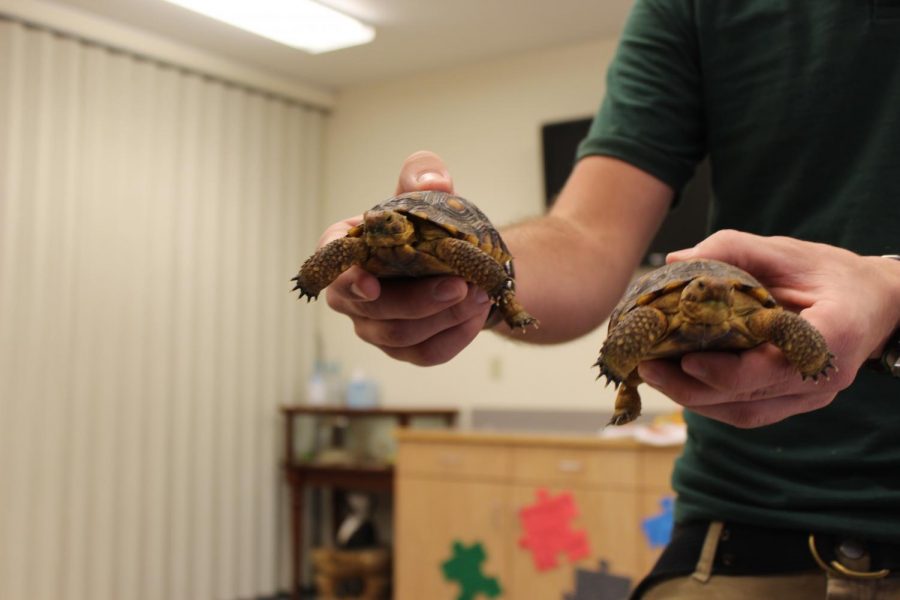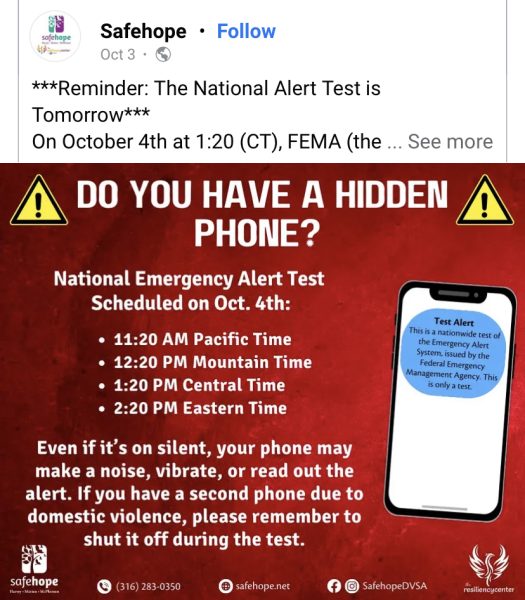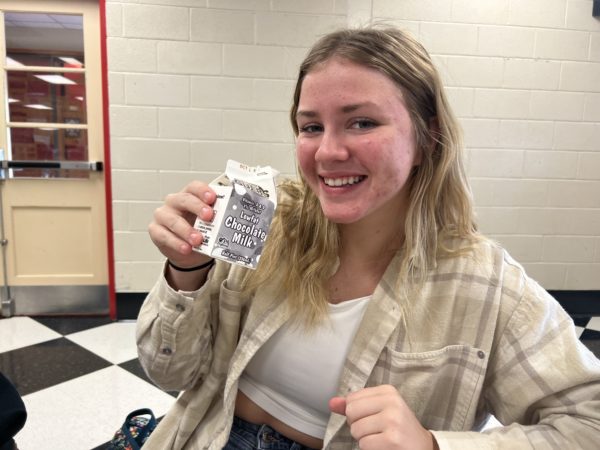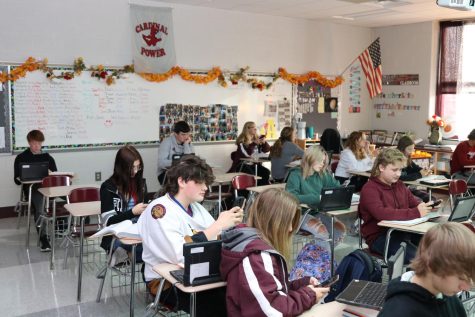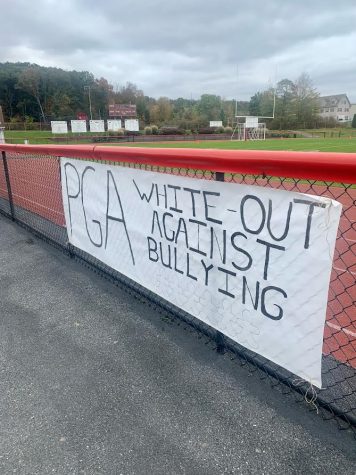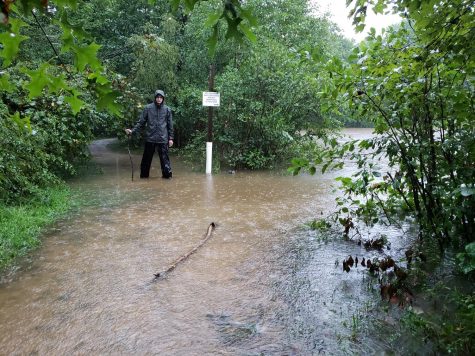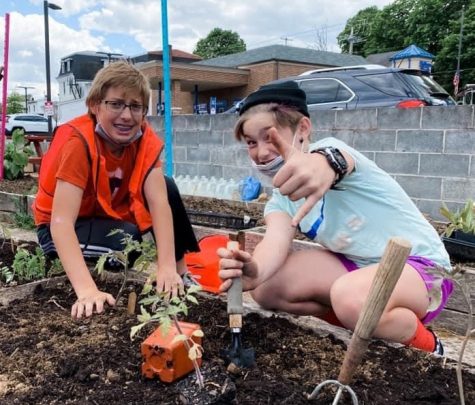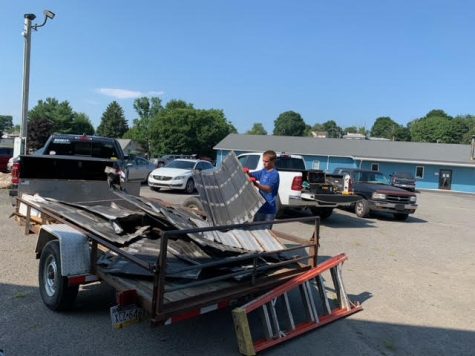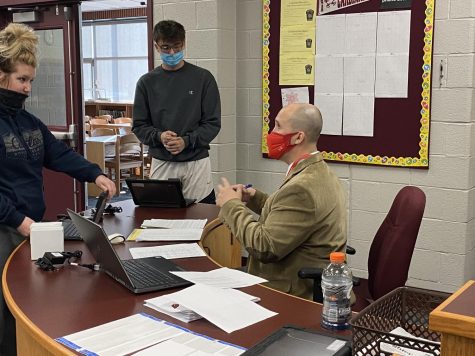A Day At The Zoo
November 1, 2018
Students of the AP Environmental class recently visited Zoo-America, a zoo in Hershey, PA, centralized on the animals living in North America, to learn about endangered and threatened species that could be in our own backyard. The class was taught by a Zoo educator named Patrick, who showed off five different species of animals from multiple kingdoms, who are currently experiencing being threatened or endangerment. The students had fun learning about the species, and afterwards explored the zoo to view the other animals the Hershey zoo had in its enclosures.
The first animal shown off to the students was the desert tortoise, a type of tortoise living in the southwestern United States. They were small, fitting in Patrick’s hands as he held them around the room to show the students. The small size of the tortoise was normal, and they still were growing. Reptiles never stop growing, “It’s just after a certain point that they reach maturity that their growth rate slows down,” Patrick explained. The tortoise is heavily affected by habitat loss, mostly from the sprawl of humans to the western United States. Overall, the tortoise is in help from humans, and we have to fix our problems to help it.
Comic, the Peregrine falcon, was shown off next to the students. Comic was loud, cooing whenever Patrick spoke. The Peregrine falcon is the fastest animal in the world, even beating the cheetah out, as it can dive to speeds up to 240 m.p.h.. The Peregrine falcon is now a threatened animal, but was once near extinction due to an insecticide called DDT, which affected the falcon as it became more concentrated as it went up the food chain, ultimately causing brittle eggs of the falcon and dramatically decreasing the birth rate of the animal. Zoo America is currently participating in a captive-Peregrine project, which breeds them and reintroduces them into the wild. The peregrine’s story has been successful so far, and by reintroducing them, the Peregrine has been able to go back into cities and thrive as a predator of the pigeon.
The black-footed ferret was next to have its turn. The endangered animal was once thought completely extinct, until a farmer’s dog came back with a black-footed ferret in it’s mouth, sadly dead, but hinting that a whole population of the species could be nearby. The black-footed ferret was not directly hunted by humans causing its near-extinction, but actually the direct hunting of its prey is what caused their downfall. The prairie dog was hunted excessively for its annoyance on midwest-based farmers, and due to that, the black-footed ferret had no food and died excessively. Only 18 ferrets were saved, meaning reproducing the population would require them to have a low-genetic diversity, and a higher-chance of genetic mutations and disorders. “There’s almost now a thousand black-footed ferrets out in the wild,” Patrick said to the students. It may not sound like a lot, but the fact that these animals were once thought completely extinct, it’s a pretty good move forward.
Bruce, the big brown bat, was next. Bruce was very small, sitting like a pile of brown fur in the palm of Patrick. Bruce, luckily, was not endangered. Though, he was here to show an example of his cousin species, the little brown bat. “A bat his size eats 4000 bugs a night,” Patrick explained, holding the bat to show the students. A bat with that impact can have a big influence in the food-chain if its removed from extinction. The little brown bat is suffering from white-nose syndrome, a mold that grows the same place as they inhabit and ultimately, weaken the bat so much that it dies. The mold grows on the bats nose, causing the bat to wake to itch, and soon, dies out of hibernation because it didn’t have a good sleep. Bruce may be safe, but his cousin, the little brown bat, needs help before it’s too late.
A foot-long reptilian was next, the American alligator! “This one is a perfect example of where we went wrong,” Patrick said, while the gator stared intensely at the students. The alligator was once endangered specifically by humans. Through swamp-filling and the fashion industry wanting to wear the leathery skin of the alligator, the population of the reptile fell. The United States, sensed the issue they put on the alligator, and made it illegal to hunt and make clothing out of the animal. Alligators though, unlike the other animals shown by Patrick, have huge birth rates and were able to quickly save themselves from extinction with the help of zookeepers and lawmakers. One female alligator can lay 60 eggs, even if only a few of those 60 survive, it’s a much better chance to save the species than if they laid only a few. Science also found out that through temperature chance, they can force the egg of an alligator to be specifically female or male, allowing an equal spread of gender to create more eggs in the future. The alligator, once released, began creating swamps and wetlands through its digging holes and ruts by it dragging its heavy body, creating whole ecosystems for marine species, and saving other species in the process. The alligator was a perfect example of where we, as humans, went wrong and were able to correct ourselves.
The rest of the day the students were allowed to venture around the rest of the zoo. Overall, the students enjoyed themselves, from visiting the other enclosures and to feeding the ducks and geese in the river that goes through the zoo. “It was fun. I got to see some animals that I wouldn’t normally here,” Alli Butler said, referencing the trip. The AP Environmental class got to enjoy themselves immensely at Hershey’s ZooAmerica.




